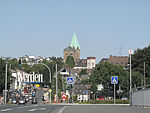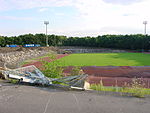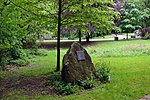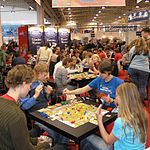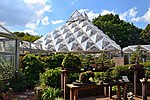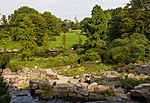Essen-Werden station
North Rhine-Westphalia railway station stubsRailway stations in EssenRailway stations in Germany opened in 1872Rhine-Ruhr S-Bahn stationsRhine-Ruhr S-Bahn stubs ... and 1 more
S6 (Rhine-Ruhr S-Bahn)

Essen-Werden is a railway station in the city of Essen in western Germany. It serves the southern city borough Werden and is situated on the bank of the river Ruhr at the junction of the Ruhr Valley Railway and the line to Essen. The station was opened in 1872 as part of the Düsseldorf-Werden-Kupferdreh line of the Bergisch-Märkische Eisenbahn. In 1877, a line to Essen opened. Passenger services on the line to Kupferdreh closed on 29 May 1965.The station today sees regular service by Rhein-Ruhr S-Bahn trains on the S6 line since 1974. Trains currently run in 20-minute intervals.
Excerpt from the Wikipedia article Essen-Werden station (License: CC BY-SA 3.0, Authors, Images).Essen-Werden station
Ruhrtalstraße, Essen Werden (Stadtbezirk IX)
Geographical coordinates (GPS) Address Nearby Places Show on map
Geographical coordinates (GPS)
| Latitude | Longitude |
|---|---|
| N 51.386824 ° | E 6.997964 ° |
Address
Essen-Werden
Ruhrtalstraße
45239 Essen, Werden (Stadtbezirk IX)
North Rhine-Westphalia, Germany
Open on Google Maps
